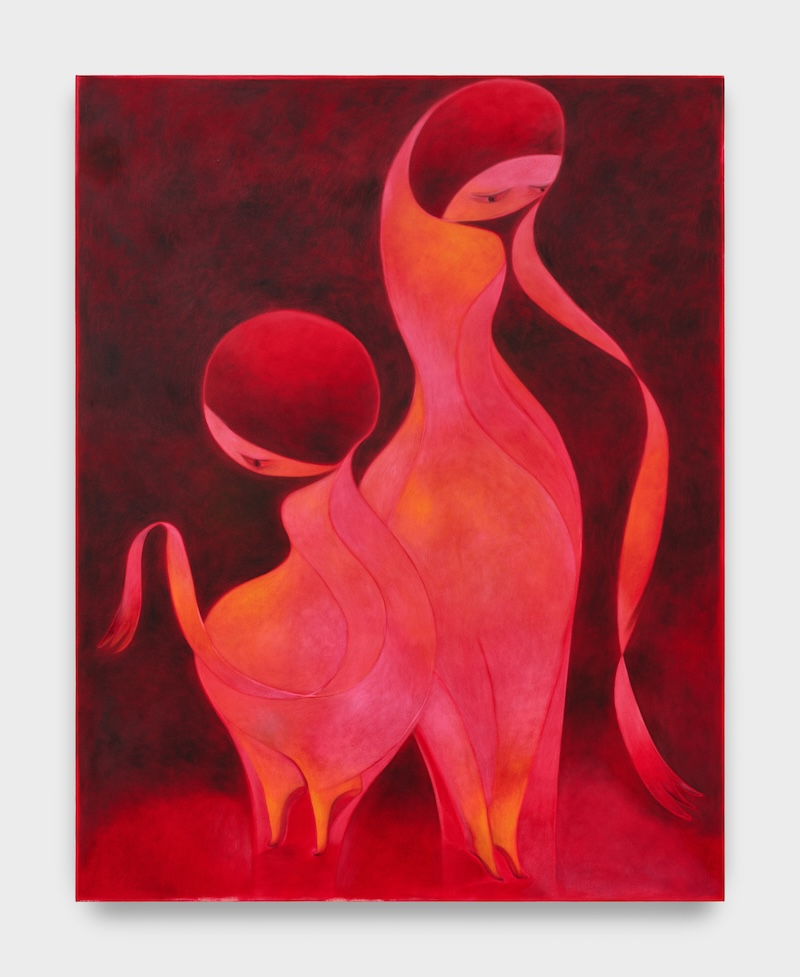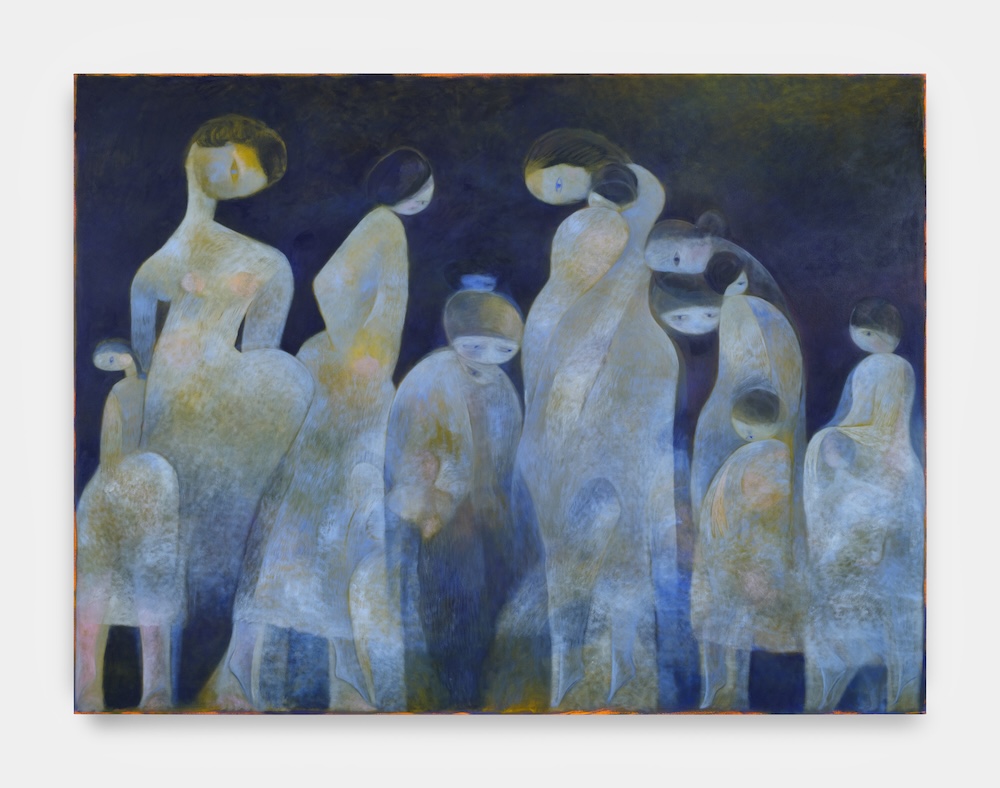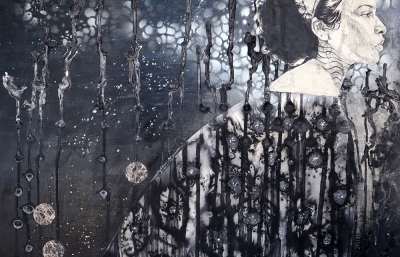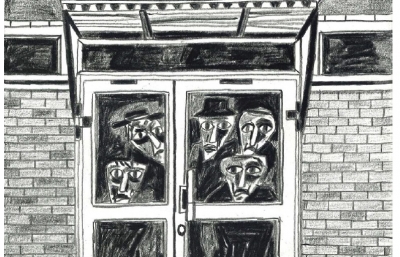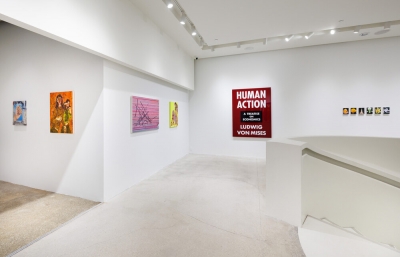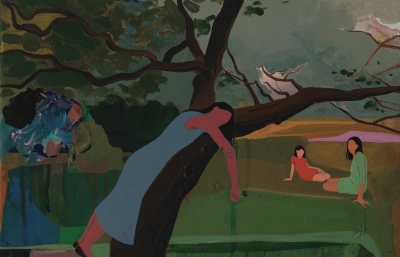Night Gallery is pleased to present A billion tiny moons, an exhibition of new paintings and ceramics by Tahnee Lonsdale. This is the artist’s second solo presentation with the gallery, following True Romance (2022). The works of art that linger in my mind are often those that I don’t understand at first glance. They instead reveal themselves slowly. This was not the case with Tahnee Lonsdale’s Auroras (2024). As soon as I entered her studio, I knew. Like recognizing a scent from childhood or an image first seen in a dream, I recognized the painting and knew it would stay with me. This is not to say that her new body of work doesn’t solicit slow-looking—it does—but that the paintings are immediately astonishing. Leonora Carrington once wrote, “I want to make people feel, to see what they haven't seen, to imagine beyond what is possible.” These celestial panoramas, populated by diaphanous beings, conceive of a realm beyond our field of vision where color, spirit, and energy intersect and the mystical dimensions of reality are made manifest.
A billion tiny moons, comprising thirteen new paintings, spans the arc of Lonsdale’s creative ascendance from totemic corporeal forms to an ephemeral, ethereal realm. Her once robust, fractured figures coalesce in amorphous, translucent shapes untethered from definition save for their downcast heads and fan-like hands. The fuschia women clutching their lilies in the monochromatic Many Lives, Many Masters (2024) appear in the nascent stages of dematerialization with their partitioned arms, resonant shades, and mottled complexions, while the luminous beings in A hand in the cloud gathers no dust (2024) have all but transcended their embodied forms. The diffuse emerald green and peony pink phantoms are as atmospheric and ephemeral as the aurora borealis ribboned across the sky. In her new body of work, the artist takes inspiration from her ceramics practice, honed during a recent residency at Ceramica Suro, Guadalajara. Feminine, circular forms are integral to the paintings, which further Lonsdale’s interests in the surreal, the spiritual, and the matriarchal.
Lonsdale’s intuitive paint application, which varies from wan to gauzy to gelatinous, gives the works their evanescent impression. Oscillating levels of opacity and fluorescence enact a sense of movement or metamorphosis as if the works were still in the midst of becoming—or un-becoming. The artist produces this illusory effect by layering lucent and matte oil paints atop a vivid acrylic base. As pigment collects in the center of the frame, the compositions assume a sculptural dimensionality emphasized by false shadows and subtle contours.
Across the surface, sweeping gestural brushstrokes alongside patches of sgraffito and scumble are interspersed with lambent planes of super-saturated shades. The dynamic interplay between depth, texture, and shape causes the colors to shimmer, undulate, and fade. Rather than preconceived visions delineated by the artist, the mystical tableaux emerge like mirages, materializing in plain sight.
Though the chimerical figures register as preternatural, they’re less like ghosts than like animate spirits: coeval beings that exist among us if just beyond the limits of observable reality. The huddled group in Hears a Distant Trumpet (2024) recalls photographs of migrant mothers and children forced to leave home and venture into the unknown. Their arched feet graze the ground while their burdens weigh heavy across their backs. If these figures are like our mirrors, then the looming creatures in Amongst the Trees (2024), composed of gossamer fog, illuminated by swirling colors and bursts of pantheistic light, are like our shadows, stretched out before us, connecting our present to our future and our past.
The two female figures in Auroras that, even now, I can see in my mind’s eye, perhaps exist somewhere in between. Their familiar bodies, encompassed by veiled shadows and flickering projections like motes of dust caught in a sunbeam, envisage what is yet to be. —Tara Anne Dalbow via Night Gallery




